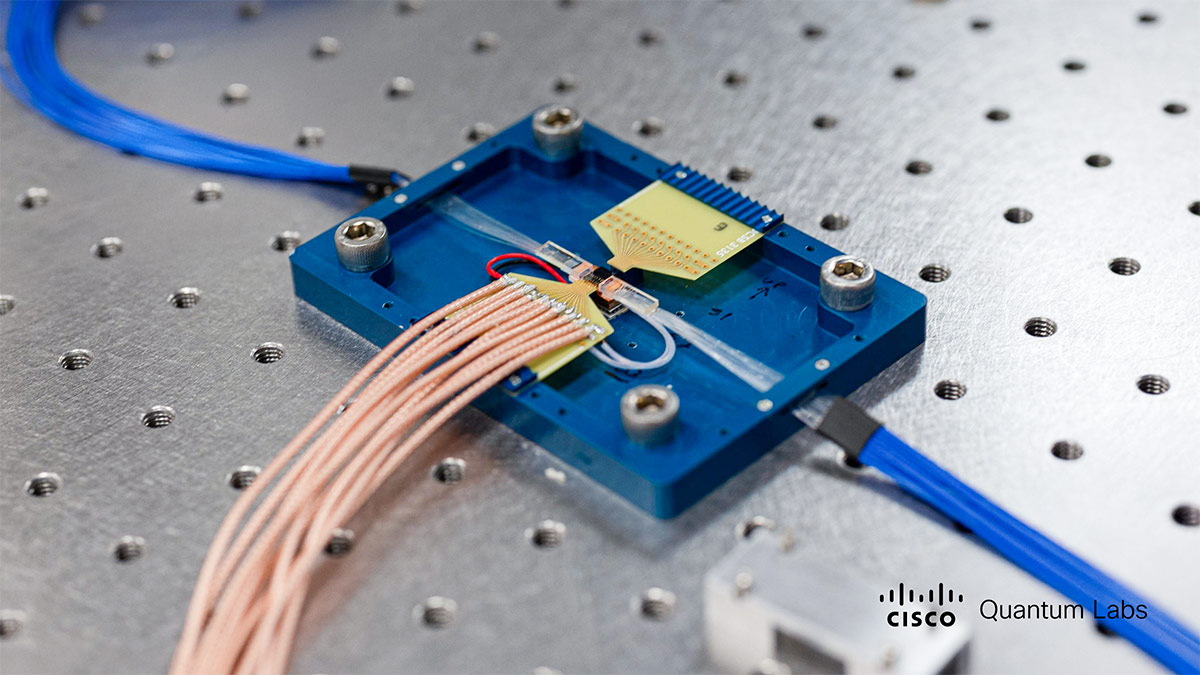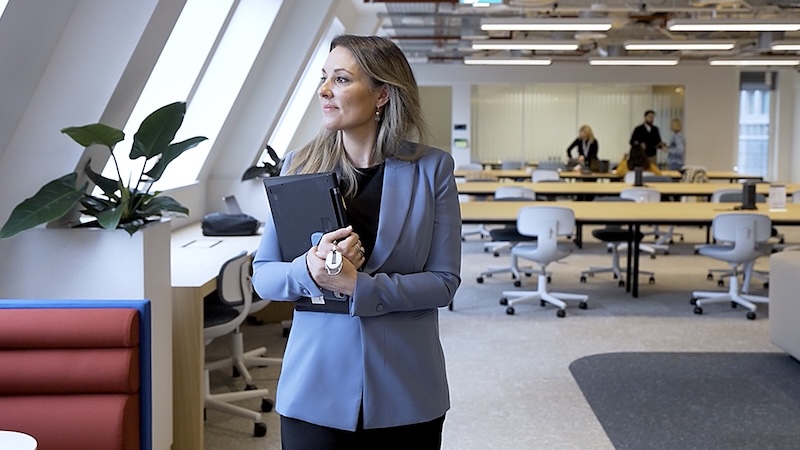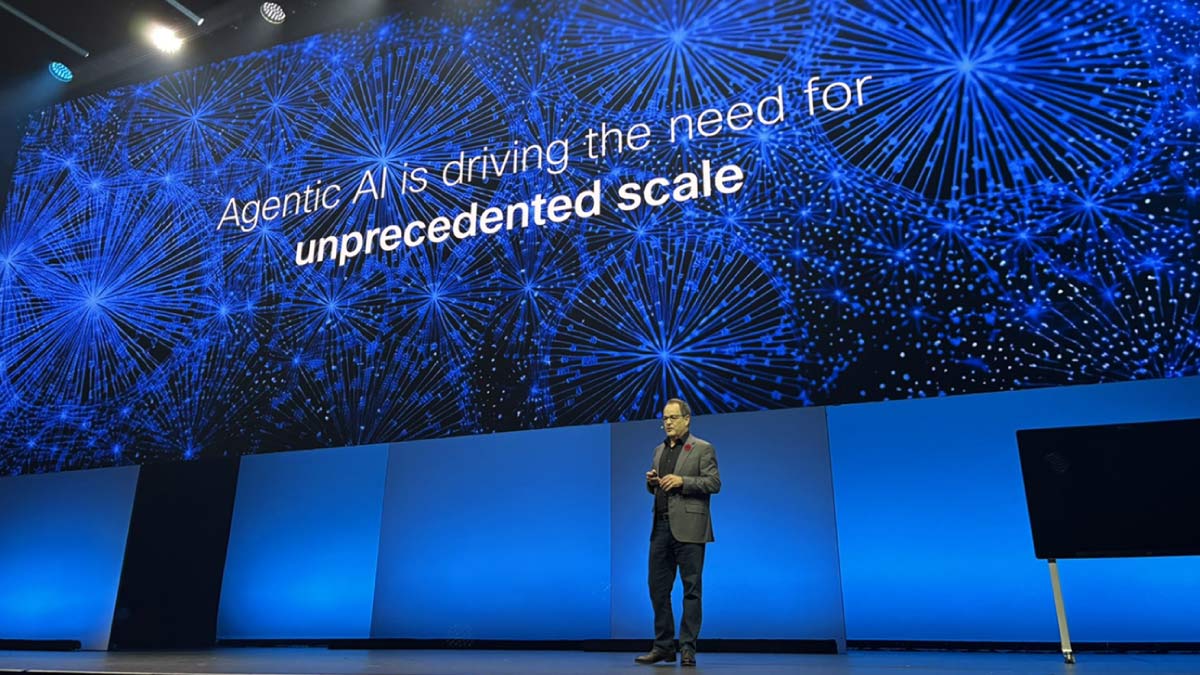At Cisco, the commitment to sustainability is all pervasive.
But unifying disparate innovation teams and setting clear goals for what needs to be accomplished is critical.
As vice president for Cisco’s Engineering Sustainability Office, Denise Lee is helping to define a clear vision for long-term impact, as teams strive to embed sustainability into all solutions and technologies. Cisco has established some of the most ambitious sustainability goals in the world, including reaching zero greenhouse gas emissions by 2040. And it extends to the company’s vast global ecosystem of customers, partners, and suppliers. Because as Lee advocates, sustainability is a collective effort. And the more Cisco innovations help organizations reach their own goals — for emissions, recycling, energy usage, smart buildings and more — the sooner the planet will breathe easier.
Thank you, Denise! Before we get to all the great things you are driving at Cisco, what does sustainability mean for you personally, as a citizen of the planet?
Sustainability, for me, means a level of accountability and responsibility in how you conduct yourself and your community — whether within your own household or the greater planet community. I think we all have a role to play. Sustainability is like a golden bridge to me. You can tie it to just about anything and everything that we do. If you’re doing it with sustainability in mind, you’ll be doing it with some level of accountability and responsibility.
So, leading Cisco’s Engineering Sustainability Office sounds like a natural fit for you.
It was definitely a natural fit. For a long time, teams working on sustainability innovations were a bit fragmented. And we needed tangible plans to get to Net Zero. A large part of our Scope 3 emissions commitment comes down to products sold. And the leaders in engineering did not have a clear idea of how to design those products to put a big dent in those emissions — and to help our customers on their own journeys toward Net Zero. So, our ability to scale for global impact is tremendous.
What are some of the key areas in which your group is working today?
The first thing was grounding everything in data, and that has been a big part of my philosophy from Day 1 in every role I’ve taken. You have to start with understanding where is your baseline? What are you measuring? And what does success look like? In this space, a lot of it comes down to tracking overall power usage and consumption.
So, once that data is in place, you can get down to the business of innovating.
This team plays an accelerator role. At Cisco, we have the brain strength. We have the intellect. We have engineers who are working on building the future, on technology that does not yet exist. But a lot of times they’re in disparate groups. So, if you have something happening in security or collab it’s totally separate than what might be happening with the common hardware group or within an acquisition, or within our core switching and routing groups. My team brings this all together. We are focused on prioritizing new capabilities across power visibility and management, green software, and more sustainable hardware. This includes features like powering down access points when they aren’t in use, enabling energy consumption visibility in our platform suite, and designing our devices for a circular economy.
What are some specific areas of innovation in which that is happening?
As cited in the book “How to Avoid a Climate Disaster,” by Bill Gates, generating electricity created 27 percent of global greenhouse emissions in 2019. And buildings and data centers are a big part of that. We have groundbreaking solutions in those two areas, where Cisco can put a big dent in those emissions. Our core portfolio for sustainable data-center, targets the market for large web scalers - Amazon, Microsoft, and Google, along with service providers. With Cisco’s single-chip Silicon One architecture, Cisco 8201 routers consume 96 percent less energy per year than the earlier NCS 6008, while supplying 35 percent more bandwidth - it’s no longer just for mass-scale infrastructure. We are now moving Silicon One across our entire switching portfolio. So, it’s incredibly exciting to see it begin to help transform smaller organizations.
I’m speaking from Cisco’s Penn1 office in New York, which is a great showcase for our smart building technologies.
There you go! It’s very exciting, right? The technology exists today where you can actually harness clean energy directly from window panes. There’s all sorts of technology you can actually architect into a building and harness. You can use technology, that we’re currently working on with our partners, to power your own DC micro grid, so that your building could be effectively off the grid, only using it for backup. We’ve actually seen buildings go net positive, where they were producing more energy than they're consuming, meaning they give back to the grid. It’s pretty fascinating, and the technology exists today. It’s a matter of how to bring it all together to produce the overall outcome in terms of carbon emissions and energy usage.
As for bringing it all together, the network is key, isn’t it?
Cisco has a big role to play in what I endearingly call energy networking. We are sitting on technology that will enable us to build out an end-to-end portfolio across our existing hardware — to connect things in a way that’s safe, smart, secure, simpler, and sustainable. You can tell I love all iteration! But it’s a way to harness the power of the network to create a vastly more efficient management of energy resources. Have you ever visited a data center? They are loud and dangerous, with signs everywhere warning of electrocution hazards. We can make it simpler, safer, and less energy hungry, by eliminating a lot of the copper conduit and managing ports that don’t need to be on all the time. In a building, it’s possible to manage motorized window shades, renewable energy sources, create a DC microgrid, and so much more.
Circular design principles are an important part of this puzzle. How much of that hardware is recyclable?
At the World Economic Forum in January 2018, Cisco CEO Chuck Robbins and eight other tech executives signed the Capital Equipment Pledge, in which Cisco committed to ~100 percent product return.
Nearly Everything will be recycled, reused, or refurbished. And some of the refurbishments we’re sending to developing countries or to support rural broadband, places where they may not need every latest feature.
What excites you about what Cisco can accomplish in the coming years?
In a 2017 study by MIT and BCG, 90 percent of organizations believed sustainability is really important. But less than 60 percent had a plan to get there. I’m excited that we can help solve this collectively as a whole. I think we can bring awareness and understanding that this is all of our responsibility. And we can help organizations put it into action.
###
Related content:
- Transforming business models with a circular economy mindset
- Closing the cybersecurity skills gap
- For 2022, new momentum on the fight against climate change




